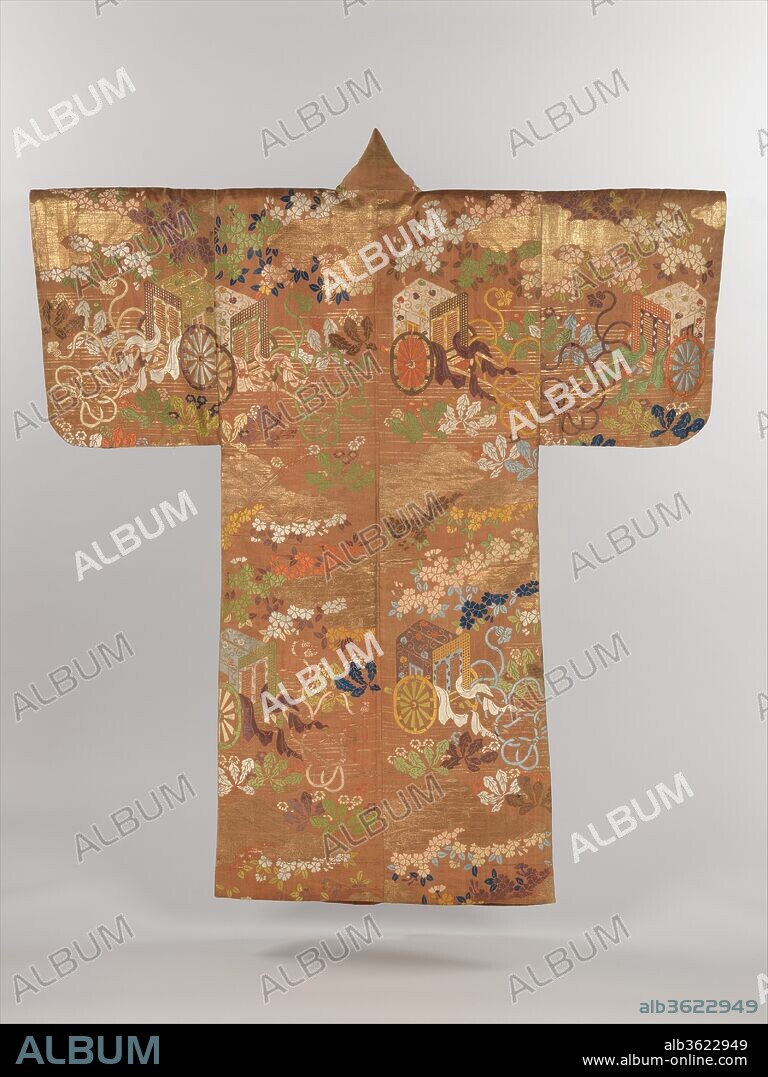alb3622949
Noh Costume (Karaori) with Court Carriages and Cherry Blossoms

|
Añadir a otro lightbox |
|
Añadir a otro lightbox |



¿Ya tienes cuenta? Iniciar sesión
¿No tienes cuenta? Regístrate
Compra esta imagen.
Selecciona el uso:

Título:
Noh Costume (Karaori) with Court Carriages and Cherry Blossoms
Descripción:
Ver traducción automática
Noh Costume (Karaori) with Court Carriages and Cherry Blossoms. Culture: Japan. Dimensions: Overall: 68 x 57 1/2 in. (172.7 x 146.1 cm). Date: first half of the 19th century.
This Noh costume has unusually large pictorial motifs of courtly carriages, dandelions, and cherry blossoms. During the Heian period (794-1185), carriages were the vehicles of the aristocracy and figured in many works of literature, such as The Tale of Genji. In an episode in chapter nine, called the "Battle of the Carriages," they are used to jockey for an advantageous position from which to view Genji's performance at the annual festival dedicated to the Kamo Shrine. The carriages on this karaori are decorated following the festival tradition of adorning headdresses and carriages with heart-shaped leaves from the wild ginger plant (aoi), which is sacred to the Kamo Shrine.
Técnica/material:
Twill-weave silk brocade with supplementary-weft patterning in metallic thread
Periodo:
Edo period (1615-1868)
Museo:
Metropolitan Museum of Art, New York, USA
Crédito:
Album
Autorizaciones:
Tamaño imagen:
3203 x 4268 px | 39.1 MB
Tamaño impresión:
27.1 x 36.1 cm | 10.7 x 14.2 in (300 dpi)
Palabras clave:


 Pinterest
Pinterest Twitter
Twitter Facebook
Facebook Copiar enlace
Copiar enlace Email
Email
